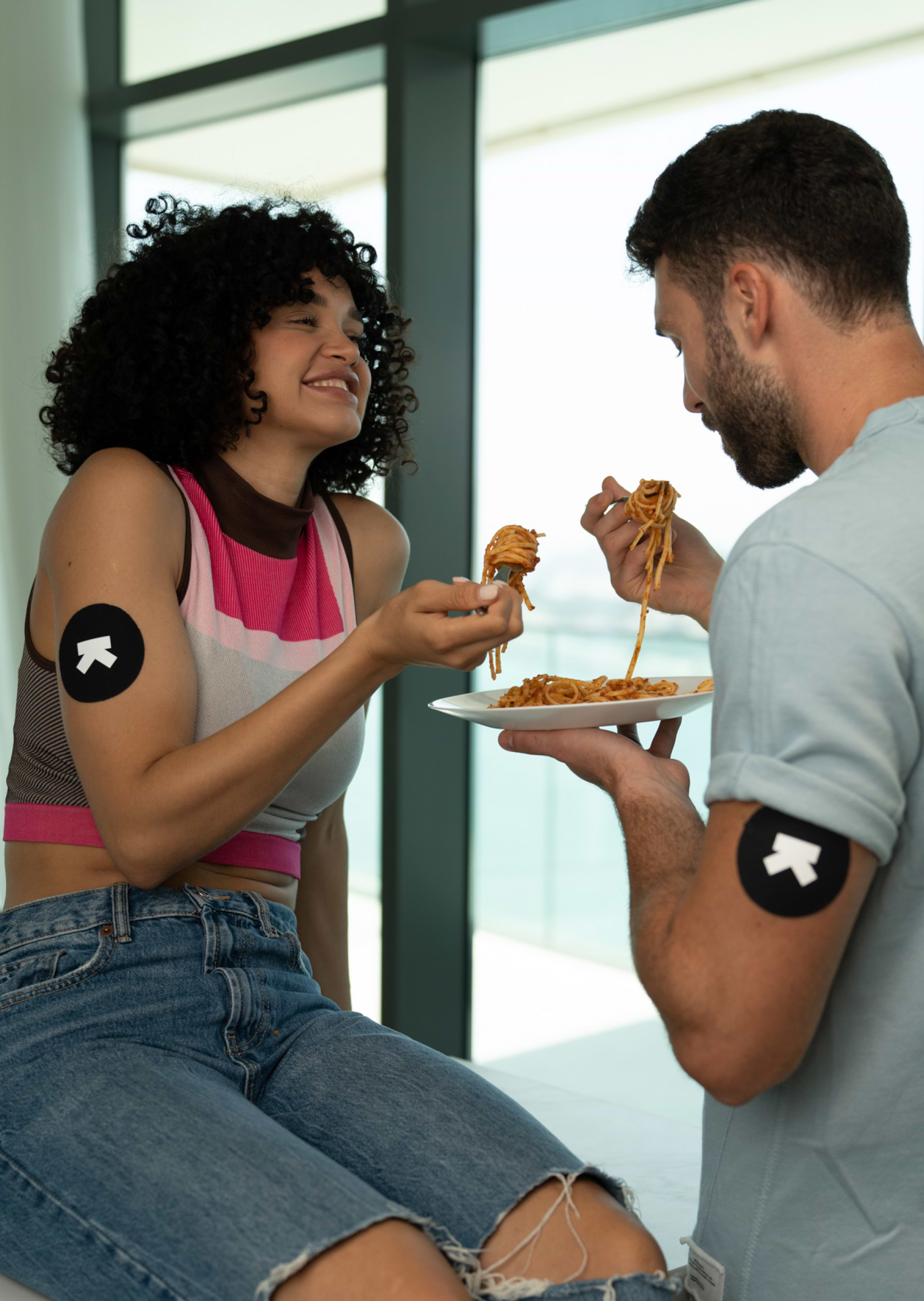
Wheat Chapati (1 Piece) and Chicken Curry (1 Serving (177g))
Dinner
152 mg/dL
avg. peak value
Usually causes a medium spike
Avg. Food Score on Ultrahuman App
Ultrahuman Users got an UNSTABLE response
How to consume Chicken Curry, Wheat Chapati without glucose spikes
Portion Control
Reduce the portion size of your chicken curry and chapati to manage the overall carbohydrate intake.
Increase Fiber Intake
Add a side of non-starchy vegetables like spinach, broccoli, or a mixed green salad to your meal. The additional fiber can help slow down the absorption of carbohydrates.
Include Healthy Fats
Add a small serving of healthy fats, such as avocado slices or a drizzle of olive oil, to your meal to help stabilize blood sugar levels.
Opt for Whole Wheat or Multigrain Chapati
Choose whole wheat or multigrain chapati instead of refined flour versions to increase fiber intake and reduce the impact on blood sugar levels.
Add Protein-rich Sides
Include a small portion of lentils or beans to your meal, which are rich in protein and can aid in maintaining stable blood sugar levels.
Incorporate Lemon or Vinegar
Add a squeeze of lemon juice or a splash of vinegar to your dish. These acidic ingredients can help reduce the blood sugar response.
Stay Hydrated
Drink water before and during your meal to aid digestion and help maintain more stable blood sugar levels.
Monitor Meal Timing
Try to eat meals at regular times and avoid long gaps between meals to maintain consistent blood sugar levels throughout the day.
Chew Slowly and Mindfully
Take your time to eat and chew your food thoroughly to aid digestion and improve the body's response to carbohydrates.
Engage in Light Physical Activity
Consider taking a short walk after your meal to help lower blood sugar levels and improve digestion.

Find Glucose response for your favourite foods
Explore OGDbDiscover
metabolic
health with M1
Ultrahuman M1 helps you measure the impact of food and activity on your body in real time through glucose as a biomarker.
Explore Ultrahuman M1Your cart is empty
Browse through our products and find something for you.

The concept of using CGM to guide your training and food plan is brilliant. The app is also very well laid out.
Rakannan - user since Jul 2021

I didn't follow any fancy diet, yet managed to educate myself around food, and built a sustainable & healthy lifestyle.
Athif Hasan - user since Sep 2021

Ultrahuman M1 has done what meal plans and diets have failed to do; make me better without all the restrictions.
Anwar Shai - user since Jun 2021
10% off on your first purchase
Subscribe to our WhatsApp for the latest updates and offers, and enjoy 10% off on your first purchase.